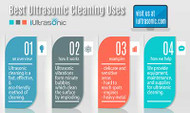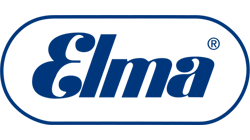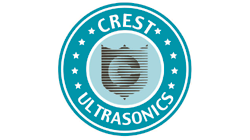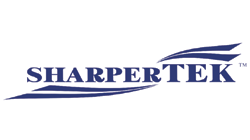Versatile Applications of Ultrasonic Cleaning Technology
|
Let Us Help We can help you
find the perfect storage unit for your needs and budget. |
Ultrasonic cleaning technology, a powerful and efficient method for removing contaminants from various surfaces, has evolved significantly since its early applications. Utilizing high-frequency sound waves in a liquid medium, this process creates microscopic cavitation bubbles that implode upon contact with surfaces, gently yet effectively scrubbing away dirt, grease, scale, and other unwanted residues. Its versatility has led to widespread adoption across numerous industries. This post explores the diverse and expanding range of applications where ultrasonic cleaning technology proves invaluable.
Key Industries and Applications Benefiting from Ultrasonic Cleaning
The adaptability of ultrasonic cleaning makes it a go-to solution for a wide array of cleaning challenges. Here are some of the key sectors and their specific uses:
Manufacturing and Industrial
- Precision Parts Cleaning: Essential for removing machining oils, metal chips, and other manufacturing debris from intricate components in aerospace, automotive, and electronics industries. Modern applications include cleaning 3D-printed parts and delicate sensors.
- Surface Preparation: Used for pre-treatment before coating, painting, or welding, ensuring optimal adhesion and finish quality. This includes cleaning metal surfaces for powder coating and preparing substrates for advanced material deposition.
- Maintenance and Repair: Efficiently cleans tools, molds, dies, and machinery parts, extending their lifespan and improving operational efficiency. This now includes cleaning robotic components and specialized manufacturing equipment.
- Heat Exchanger and Boiler Tube Cleaning: Effectively removes scale and fouling, improving heat transfer efficiency and reducing energy consumption. Advanced ultrasonic systems can now be deployed for in-situ cleaning in some applications.
Automotive and Transportation
- Engine Component Cleaning: Thoroughly cleans carburetors, fuel injectors, cylinder heads, and other engine parts, restoring performance and fuel efficiency. Modern applications include cleaning components of electric vehicles (EVs) and hybrid vehicles.
- Brake System Cleaning: Removes brake dust and contaminants, ensuring optimal braking performance and safety.
- Transmission and Hydraulic System Cleaning: Cleans intricate passages and components, preventing malfunctions and extending service life.
Electronics and Semiconductor
- PCB Cleaning: Removes solder flux, dust, and other contaminants from printed circuit boards, ensuring reliable performance. Modern ultrasonic cleaners for electronics often incorporate advanced features for handling sensitive components and lead-free solders.
- Semiconductor Wafer Cleaning: Used in critical cleaning stages during semiconductor manufacturing to remove microscopic particles and ensure high yields. This field continues to see advancements in megasonic cleaning technologies.
- Cleaning Connectors and Cables: Ensures reliable electrical connections by removing dirt and oxidation.
Medical and Pharmaceutical
- Surgical Instrument Cleaning: A critical step in sterilization, ultrasonic cleaners effectively remove bioburden from complex instruments with intricate designs. Modern medical-grade ultrasonic cleaners often feature validated cleaning cycles and traceability.
- Dental Instrument Cleaning: Essential for infection control, providing thorough cleaning of dental tools and prosthetics.
- Pharmaceutical Equipment Cleaning: Used to clean reactors, mixing vessels, and other processing equipment, ensuring compliance with stringent hygiene standards and preventing cross-contamination.
Optics and Photonics
- Lens and Mirror Cleaning: Safely removes dust, fingerprints, and other contaminants from delicate optical components without scratching. Advanced ultrasonic cleaning techniques are crucial for high-precision optics used in lasers and imaging systems.
Jewelry and Watchmaking
- Gentle Yet Effective Cleaning: Restores the shine and luster of jewelry and watch parts without causing damage. Modern ultrasonic cleaners for this sector often offer adjustable power settings for delicate items.
Food and Beverage
- Equipment Cleaning: Used to clean processing equipment, ensuring hygiene and preventing the growth of bacteria. This includes cleaning pipes, valves, and filling nozzles.
3D Printing and Additive Manufacturing
- Support Material Removal: Efficiently removes support structures from 3D-printed parts, especially those with complex geometries. Specialized ultrasonic baths are designed for this purpose.
- Powder Recovery: Can be used in some applications to assist in the recovery of un-sintered powder.
Renewable Energy
- Solar Panel Cleaning: Research is ongoing into using ultrasonic technology for automated and efficient cleaning of solar panels to maintain optimal energy production.
Key Considerations When Choosing Ultrasonic Cleaning Technology
Selecting the right ultrasonic cleaning system depends on several factors:
- Type and Extent of Contamination: Different contaminants require specific frequencies and cleaning solutions.
- Material and Geometry of Parts: Delicate materials or intricate designs may necessitate higher frequencies and gentler cleaning action.
- Volume of Parts: Batch size and throughput requirements will influence the size and features of the cleaner.
- Cleaning Solution Compatibility: The ultrasonic cleaner's materials must be compatible with the chosen cleaning chemistry. Modern eco-friendly and specialized cleaning solutions are increasingly available.
- Automation and Integration: For high-volume applications, automated ultrasonic cleaning systems integrated with robotic handling may be necessary.
- Safety and Environmental Regulations: Compliance with relevant safety standards and environmental regulations regarding cleaning solutions and waste disposal is crucial.
What's Next For Ultrasonic Cleaning?
Ultrasonic cleaning technology continues to evolve, offering increasingly sophisticated and efficient solutions for a vast array of cleaning challenges across diverse industries. Its ability to provide thorough, consistent, and often automated cleaning makes it an indispensable tool for manufacturers, maintenance professionals, and many others striving for optimal cleanliness and performance. As technology advances, we can expect even more innovative applications of ultrasonic cleaning to emerge, further solidifying its role as a critical cleaning method in the modern world.






